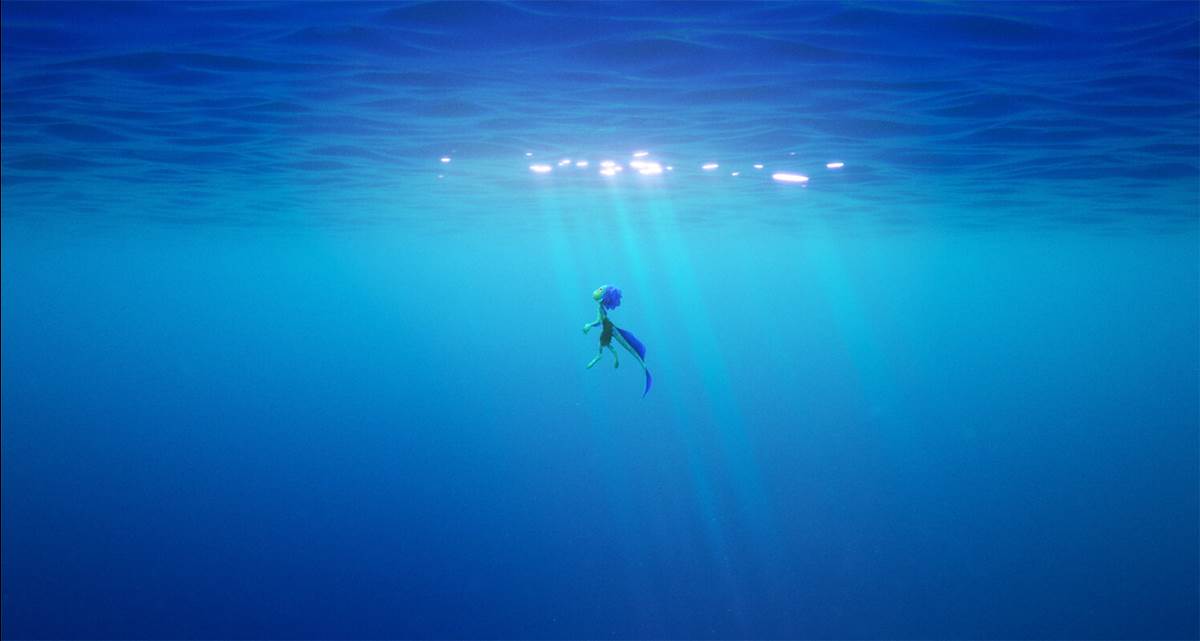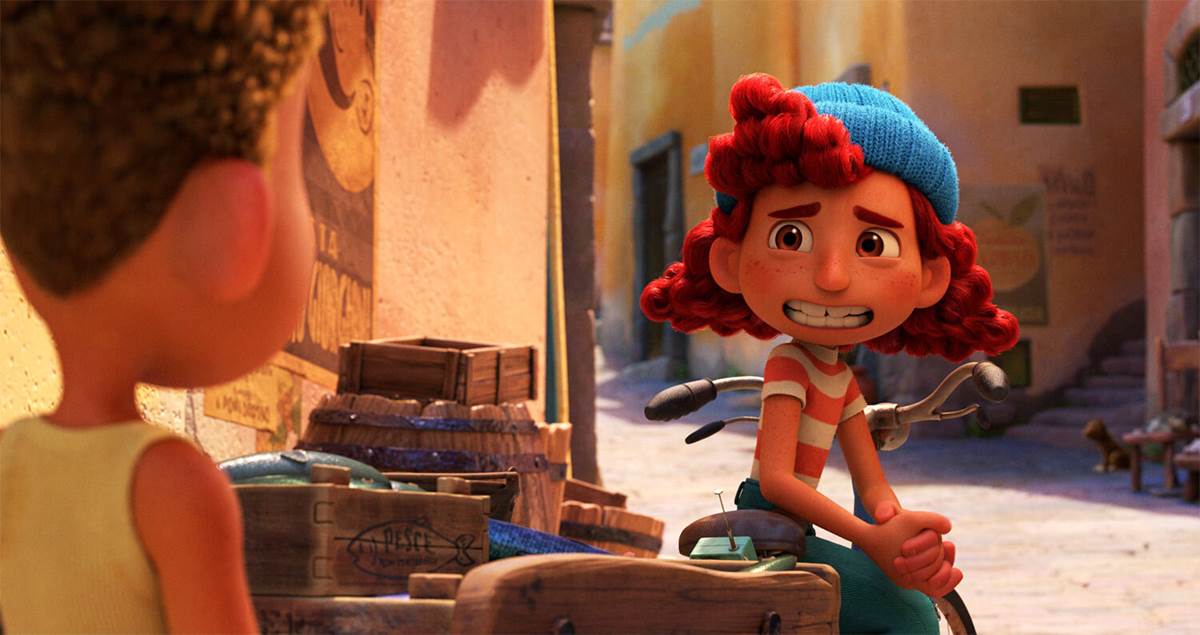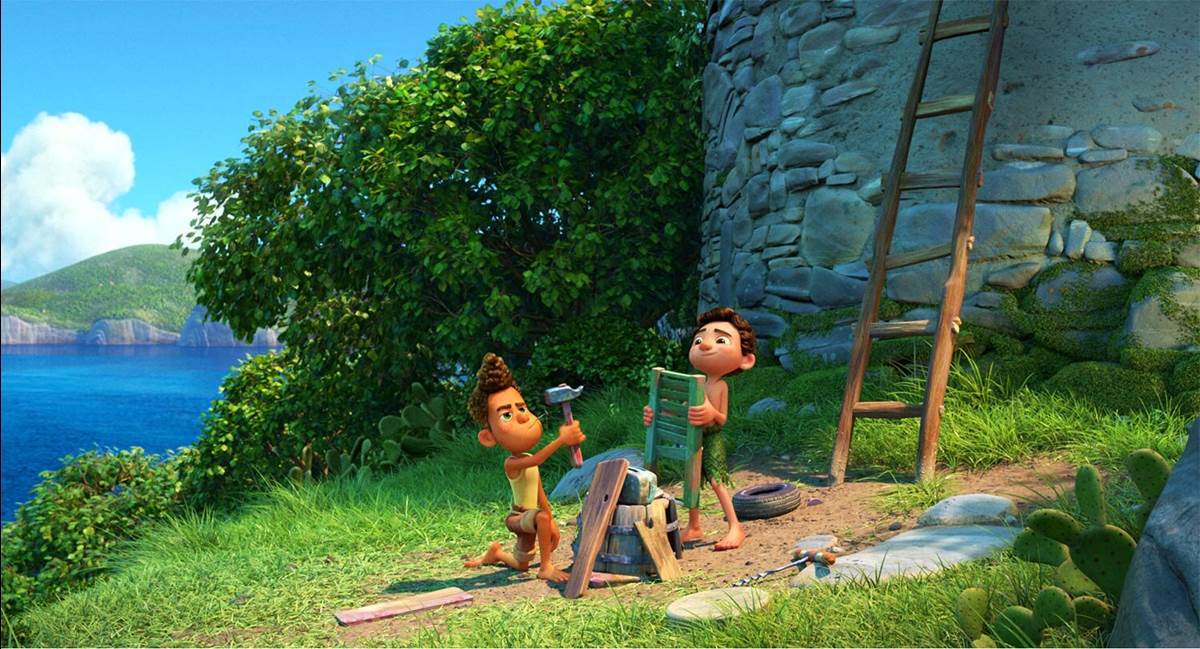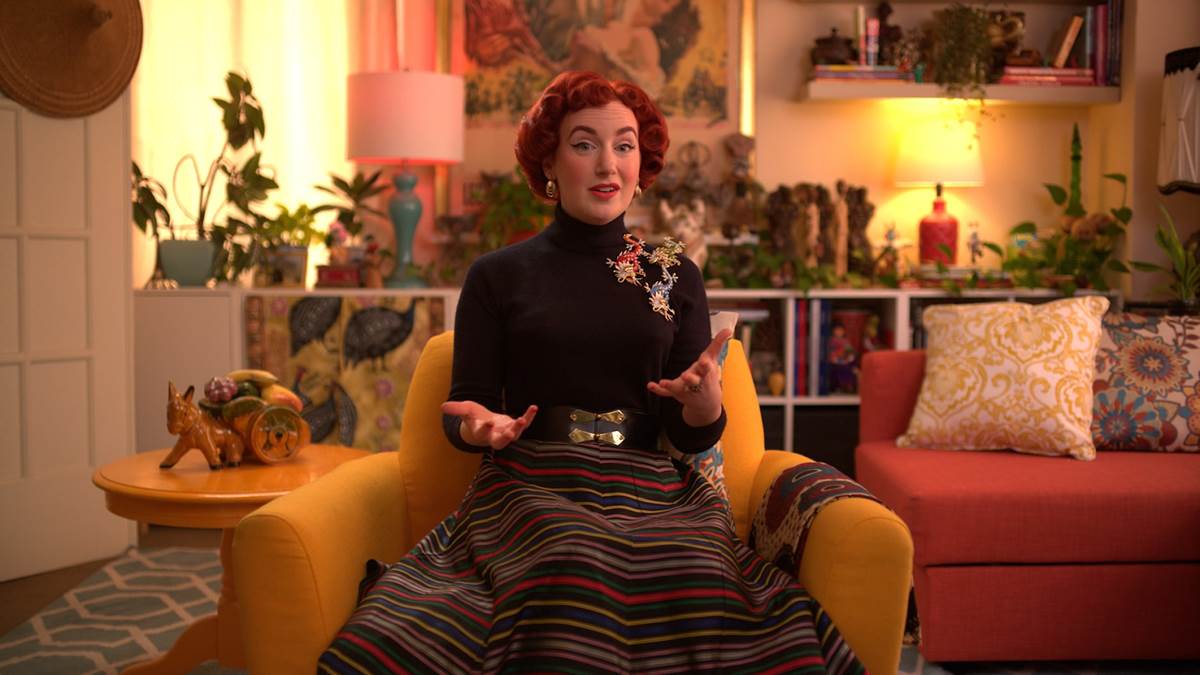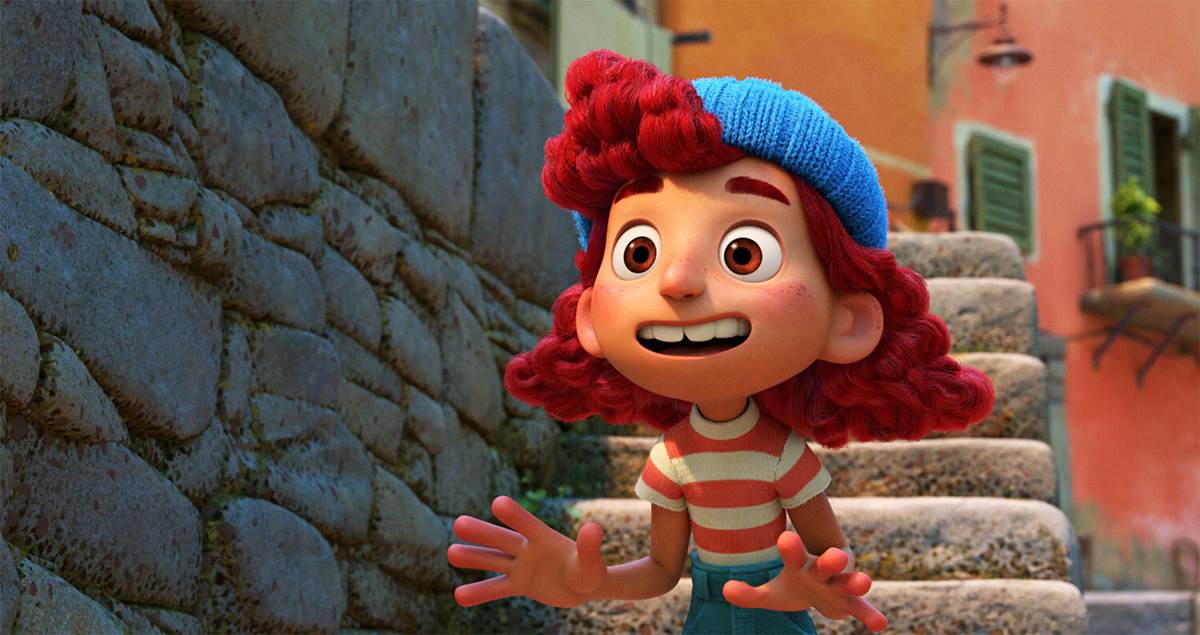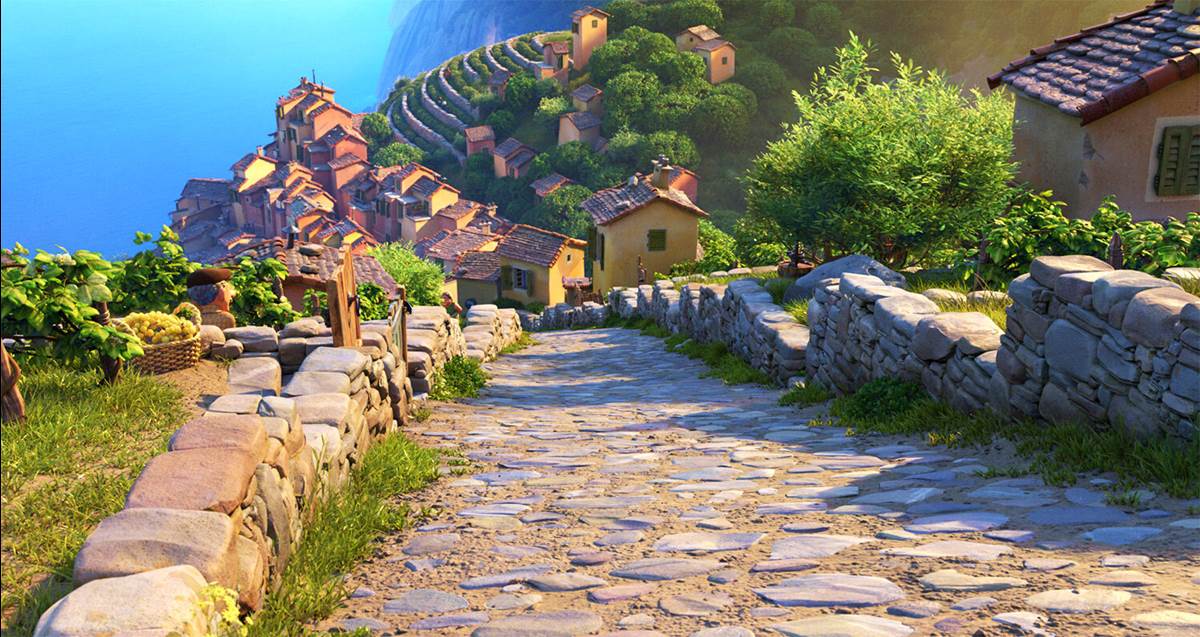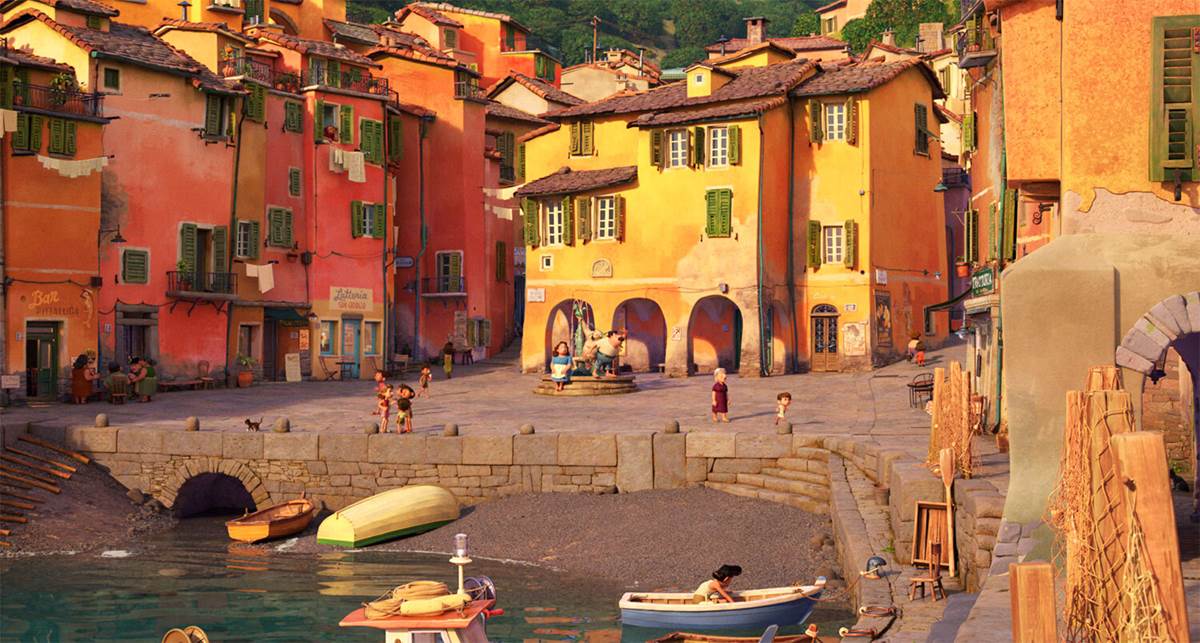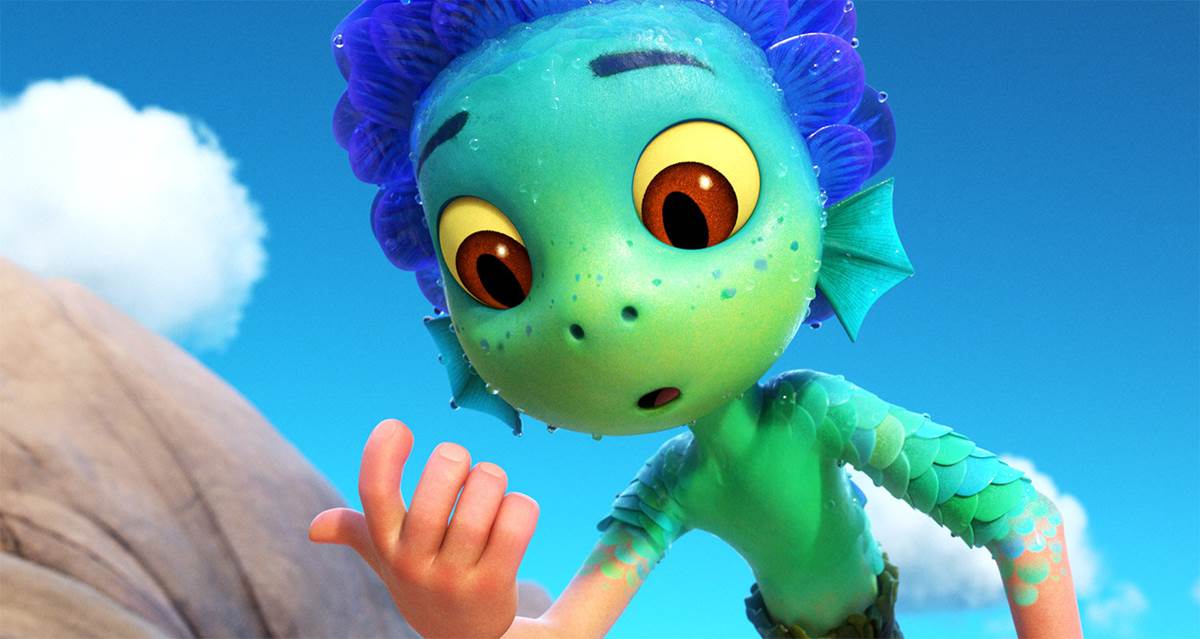Over the last few weeks, I was fortunate enough to attend special online presentations, including one from the VIEW Conference featuring much of the creative team behind the latest film from Pixar Animation Studios, Luca.
The panel consisted of:
- Enrico Casarosa – Director
- Andrea Warren – Producer
- Daniela Strijleva – Production Designer
- Kim White – Director of Photography
- David Ryu – Visual Effects Supervisor
- Deanna Marsigliese – Character Art Director
Together, they discussed the origins of the film, much of its artistic styles and inspirations, and some fun anecdotes about the production. A lot of what I learned and heard during this presentation gave me even more of an appreciation for the film, and I was able to share a few of these stories during our recent edition of Movie Club which focused on Luca.
Enrico Casarosa, who previously directed the short La Luna at Pixar, pitched the story at its basic premise, focusing on the difficulty of growing up and feeling out of place, with the added appeal of the setting and time frame in which the story was placed. Over time, the story evolved into the one we see on our screens today, following a young sea monster named Luca as he meets his friend Alberto where together they venture into the one area they aren’t supposed to go: The Surface.
After Luca gets caught, his parents decide to send him to the deep to live with his uncle. Before they get the chance, he runs away with Alberto and together, they decide to go to the seaside town of Portorosso to get their own Vespa to see the world. To do this, they must remain in disguise as humans and win the Portorosso Cup with the help of their new friend Guilia and her father, Massimo, against town bully, Ercole, who may or may not be 16 years old.
Compared to more recent films from Pixar, this movie is surprisingly simple at its core and that’s not a bad thing. As Casarosa said, it’s meant to be relatable to feeling like an outsider. Casarosa and Producer Andrea Warren both say they intentionally leave “outsider” open to interpretation, without any kind of specification and are very pleased that so many groups have taken to it, including immigrants and members of the LGBTQ+ community.
The story, Casarosa said, is based entirely on a summer he spent with one of his best friends, “coincidentally” also named Alberto. The crew also likes to mention that this friend also appears in the film, and served as inspiration for the production.
During the session, viewers began to notice a striking similarity between Character Art Director (who designed the characters) Deanna Marsigliese and Giulia. When asked if there was any intentional similarity between the two, Deanna said that she took her look from Giulia, not the other way around. Interestingly, Deanna was also quick to point out the one thing that they focused on, Giulia’s nose, adding that no girl in an animated movie has a nose like that and they had to get it right.
Eagle eyed viewers may have already spotted Deanna in the Disney+ Series, Inside Pixar.
The characters and the movie as a whole have a very distinct visual style that some critics have been quick to attack. Compared to more recent Pixar fare, which has gone for photorealism and stunning beauty, Luca has been surprisingly scaled back. Intentionally. The team described that it was meant to evoke a children’s book, with simple shapes and bright colors. The skin on the humans isn’t full of pores, and the scales on the sea monsters aren’t incredibly detailed. The look and story are also, according to Casarosa, heavily influenced by the works of Hayao Miyazaki and his studio, Studio Ghibli. The crew also tells the story of how they originally wanted the mouths of the characters to appear to be cutouts, similar to stop-motion animation, but Casarosa himself stated that it ended up being too distracting, pulling viewers out of the movie just to focus on the mouth animation.
The setting of the film, both under the sea and on land, is a beautiful juxtaposition of realistic and stylized keeping in line with the look of the film. The team explains that the VFX crew had to create a series of controls to maintain the look, especially on the water so it looks realistic, but still not completely natural, say with perfect curves on the waves that way the film still subconsciously feels like something magical and fantastic. The blending of the real and fantastic isn’t just limited to the sea and the water though. Viewers of the film immediately fall in love with the harbor town of Portorosso. While fictional, it is heavenly inspired by Liguria, a region in Italy. The same idea of keeping it realistic yet fantastical was put in place for the village as well. In fact, according to Casarosa, the inclusion of Portorosso as a setting of the film is one of several reasons why they decided to set the film in the 50s. Casarosa says that a village like Portorosso on the Italian coast wouldn’t exist like that in the present day. It would still be small in the 50s, with maybe a few thousand people who all kind of know each other. Almost disappointedly, Casarosa said that today, that kind of Italian seaside village would be overrun by tourists and cruise ships.
When the sea monsters are in their human form and get wet, their true identity is revealed. While on screen it looks like a simple process, there are actually numerous teams that contribute to this seemingly simple effect. Without revealing any spoilers, the idea of concealing themselves amongst the humans is a heavy part of the story. And to tell that story, the same VFX Team built in controls that would allow character animators to take over and control the reveal of their character if they got wet. The VFX team would then go in and finalize the shot later in production.
One thing that is asked all the time, and the Luca panel was no exception, is whether or not there are any fun easter eggs to look for. Aside from Marsigliese noting that there are characters in the film that look an awful lot make many specific members of her family. They mention several others, but our own Alex Reif has already made a comprehensive list of what can be found in the film that can be found here.
Like any Pixar film, and one of the things that makes the studio great in my opinion, is that on the surface this movie is just a simple fun romp. But a closer look will reveal that there is so much more thought, design, and art that went into the production.
You can watch Luca now on Disney+.



